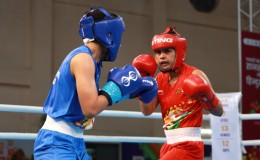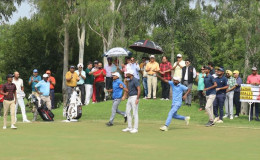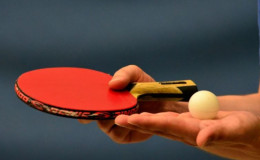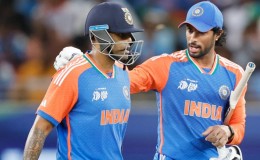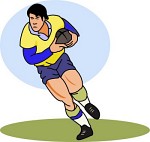
- A game played by two teams, 13 to 15 players on each side,
- Each team try to score as many points as possible by carrying, passing, kicking and grounding an oval shaped ball.
- The object of the game is to gain possession of the ball and take it to the opposition territory to place it in the in-goal area.
- During the match, players may be replaced (for injury) or substituted (for tactical reasons).
- Up to 7 substitutes are allowed.
- Rugby union is played between two teams, each of which starts the match with 15 players on the field.
- Players in a team are divided into eight forwards (two more than in rugby league) and seven backs.
Dimensions of the field
Outside Dimensions
- Length including the Dead Ball Line should not exceed from 14 metres and width should not be greater than 70 metres.
- 10 Meter Line
- It is marked 10 meters from the halfway line on either side. The 10 meter line marks the distance that a kick off must go before the opposing team may gain possession of the ball.
- 22 Meter Line
- The 22 meter line is measured from the goal line (or tries line). This is the line marks the spot play is restarted.
- Rugby goalposts are H-shaped, and consist of two poles, 5.6m apart, connected by a horizontal crossbar 3m above the ground.
- Unlike some other sports there are no goalkeepers, and the section underneath the crossbar has no special meaning.
Rugby ball:
- An official rugby union ball has a length in-line of 280–300 millimetres, a circumference (end to end) of 740–770 millimetres, and a circumference (in width) of 580–620 millimetres.
- The rugby ball may not weigh more than 460 grams or less than 410.
- Air pressure should be of 65.71–68.75 kilopascals
Other Equipments:
- The most basic items of equipment for a game of rugby are the ball itself, a rugby shirt (also known as a "jersey")
- Protective equipment is optional and strictly regulated. The most common items are mouthguards, which are worn by almost all players, and are compulsory in some rugby-playing nations.
- Other protective items that are permitted include a scrum cap;
- Non-rigid shoulder pads,
- Shin guards; which are worn underneath socks
Mode of Play
- The ball is kicked to start the game.
- Then carry, throw, kick or give the ball, usually but not necessarily to other players in your team.
- When you are the ball carrier you may carry the ball in any direction.
- Any player may pass, throw or give the ball to any another player but only if the ball does not travel forward of your position on the field.
Scoring Pattern
- A try, scored by grounding the ball in the in-goal area, is worth 5 points
- A subsequent conversion kick scores 2 points;
- A successful penalty kick or a drop goal each score 3 points.
Basic Rules and regulations:
- Players are divided into backs and forwards.
- There are eight forwards whose job is to gain possession of the ball and get it to the backs.
- The Backs will develop a running play and work together to score tries (goals).
- The backs are more mobile, but the positions are very interchangeable.
- A Field Goal can be scored at any time during general play by drop-kicking the ball over the cross-bar.
- A Goal is scored from either a conversion after a try or from the spot where the referee has awarded a penalty.
- A Try is scored when a player grounds the ball in his opponents in-goal. After scoring a try, a player from that team will attempt a conversion.
- A Conversion is a kick from a spot on the field that is in-line with where the try was just scored.
- The game is played over two 40 minute halves
- The team that has scored the most number of points at the end of play is the winner.
Types of penalty:
- A game played by two teams, 13 to 15 players on each side,
- Each team try to score as many points as possible by carrying, passing, kicking and grounding an oval shaped ball.
- The object of the game is to gain possession of the ball and take it to the opposition territory to place it in the in-goal area.
- During the match, players may be replaced (for injury) or substituted (for tactical reasons).
- Up to 7 substitutes are allowed.
- Rugby union is played between two teams, each of which starts the match with 15 players on the field.
- Players in a team are divided into eight forwards (two more than in rugby league) and seven backs.
Dimensions of the field
Outside Dimensions
- Length including the Dead Ball Line should not exceed from 14 metres and width should not be greater than 70 metres.
- 10 Meter Line
- It is marked 10 meters from the halfway line on either side. The 10 meter line marks the distance that a kick off must go before the opposing team may gain possession of the ball.
- 22 Meter Line
- The 22 meter line is measured from the goal line (or tries line). This is the line marks the spot play is restarted.
- Rugby goalposts are H-shaped, and consist of two poles, 5.6m apart, connected by a horizontal crossbar 3m above the ground.
- Unlike some other sports there are no goalkeepers, and the section underneath the crossbar has no special meaning.
Rugby ball:
- An official rugby union ball has a length in-line of 280–300 millimetres, a circumference (end to end) of 740–770 millimetres, and a circumference (in width) of 580–620 millimetres.
- The rugby ball may not weigh more than 460 grams or less than 410.
- Air pressure should be of 65.71–68.75 kilopascals
Other Equipments:
- The most basic items of equipment for a game of rugby are the ball itself, a rugby shirt (also known as a "jersey")
- Protective equipment is optional and strictly regulated. The most common items are mouthguards, which are worn by almost all players, and are compulsory in some rugby-playing nations.
- Other protective items that are permitted include a scrum cap;
- Non-rigid shoulder pads,
- Shin guards; which are worn underneath socks
Mode of Play
- The ball is kicked to start the game.
- Then carry, throw, kick or give the ball, usually but not necessarily to other players in your team.
- When you are the ball carrier you may carry the ball in any direction.
- Any player may pass, throw or give the ball to any another player but only if the ball does not travel forward of your position on the field.
Scoring Pattern
- A try, scored by grounding the ball in the in-goal area, is worth 5 points
- A subsequent conversion kick scores 2 points;
- A successful penalty kick or a drop goal each score 3 points.
Basic Rules and regulations:
- Players are divided into backs and forwards.
- There are eight forwards whose job is to gain possession of the ball and get it to the backs.
- The Backs will develop a running play and work together to score tries (goals).
- The backs are more mobile, but the positions are very interchangeable.
- A Field Goal can be scored at any time during general play by drop-kicking the ball over the cross-bar.
- A Goal is scored from either a conversion after a try or from the spot where the referee has awarded a penalty.
- A Try is scored when a player grounds the ball in his opponents in-goal. After scoring a try, a player from that team will attempt a conversion.
- A Conversion is a kick from a spot on the field that is in-line with where the try was just scored.
- The game is played over two 40 minute halves
- The team that has scored the most number of points at the end of play is the winner.
Types of penalty:
- A tap kick, when the ball is kicked a very short distance from hand, allowing the kicker to re gather the ball and run with it;
- A punt, when the ball is kicked a long distance from hand, for field position;
- A place-kick, when the kicker will attempt to score a goal;
- A scrum mean Players may be sent off (signalled by a red card) or temporarily suspended for ten minutes (yellow card) for foul play or repeated infringements, and may not be replaced.
Common offences:-
- Obstructing opponents
- Punching, trampling, kicking or tripping players
- Tackling too early, too late, above the shoulders
- Tackling a player when they are in the air
- Doing anything which is unfair or dangerous.
Match officials:-
- A referee, and
- Two assistant referees
Major international competitions/ tournaments:
- The most important tournament in rugby union is the Rugby World Cup, a men''s tournament that takes place every four years among the elite national rugby union teams.
- Other major international competitions are the Six Nations Championship (England, France, Ireland, Italy, Scotland and Wales) and
- The Tri Nations Series-(Australia, New Zealand and South Africa.)
Variants/ types:
- Rugby sevens: In rugby sevens, there are only 7 players per side, and each half is normally 7 minutes
- Touch rugby: in which "tackles" are made by simply touching the ball carrier with two hands.
- Tag Rugby: in which the participants wear a belt with two Velcro tags, the removal of either counting as a ''tackle''.
- Rugby tens: a Malaysian variant with ten players per side.
- Beach rugby is a sport that can be based on either of the rugby football codes, league or union.
Governing bodies:
- The international governing body of rugby union (and associated games such as sevens) is the International Rugby Board (IRB).
- Six continental associations, which are members of the IRB, form the next level of administration; these are:
- Confederation of African Rugby (CAR)
- Asian Rugby Football Union (ARFU)
- North American and Caribbean Rugby Association (NACRA)
- Federation Internationale de Rugby Amateur – Association Europeenne de Rugby (FIRA-AER)
- Federation of Oceania Rugby Unions (FORU)
- Confederación Sudamericana de Rugby (South American Rugby Confederation) (CONSUR)


